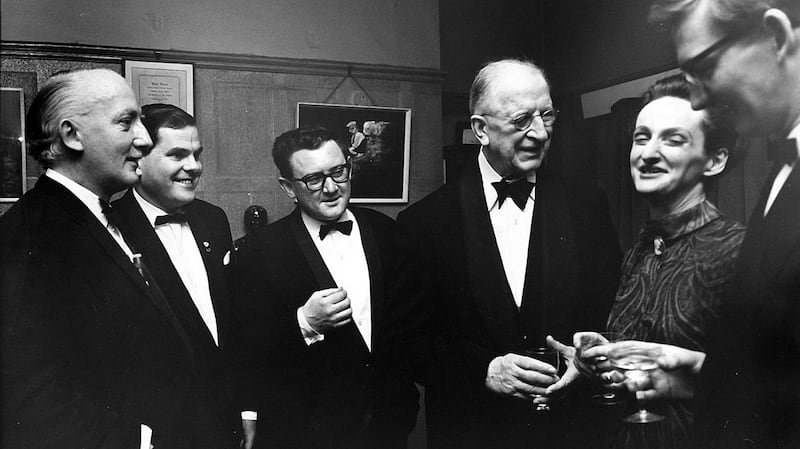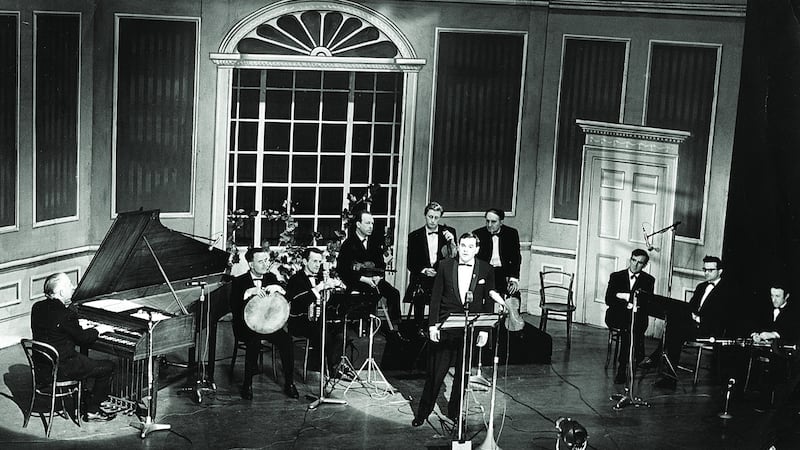Some people are legends. I had the privilege of working with one of them. Here in Cork, we often affectionately refer to him as the Pucker. We treat him like a god. And rightly so.
I saw Seán Ó Sé perform live for the first time in the early 1970s, when I was still at secondary school. He came to my home town of Mallow one Sunday evening to sing at the annual senior citizens’ Christmas party in the Central Hotel. My school friends and I made sure we would be there. We pretended we wanted to give a helping hand. In truth, all we really wanted was to see Seán.
By then, Seán had been famous for over a decade, ever since 1962, when he recorded a song about a mad goat, An Poc ar Buile. My friends and I knew the words backwards, as we had heard Seán sing the song on radio hundreds of times and seen him perform it on television. Now, we couldn’t wait to hear him sing it live.


The party got under way and finally, when the meal was over and the tables cleared, the music began. My friends and I bunched together excitedly at the top of the hall, beside the band.
And on to the centre of the floor came Seán, with his dark hair and his dark suit. He was even more handsome in reality than on television. He burst into song. We were in seventh heaven. And when he sang An Poc ar Buile, we went wild. Of course, we never got to talk to him. We were too shy.
It was over 40 years later when I eventually got to talk to Seán. Having decided that I would like to co-write his memoir, I rang him with my suggestion. Straightaway, without any fuss, he said, “The least I can do is meet you.” I was delighted.
There were many reasons why I wanted to co-write Seán’s memoir. First of all, I was interested in hearing his story myself and I believed that others also would want to hear it. Sean’s singing career has spanned over 50 years and he has performed all over the world. Today, he is still as popular as ever. That in itself speaks volumes about his talent and his appeal. And so, from the outset, I was confident of having the book published, as a publisher would immediately recognise that the book should have a good readership.
Also, I believed that Seán was a very open person, especially as he had spoken in great detail to the media about his battle with cancer. By discussing his illness in the book, he would be helping so many people who suffer from the disease and also their families.
Furthermore, I knew that Seán had been the best friend of Seán Ó Riada and I was especially interested in hearing about their friendship.
As well as that, I wanted to get to the root of Seán’s singing, to find out exactly where it all started. Did it begin in his childhood? Was he encouraged to sing by his parents? Was there a history of singing in his family?
So too, as Seán is also renowned for his storytelling, I knew that he would have plenty of yarns and funny incidents.
When Seán agreed to do the book, we decided to meet for three hours once a week, when possible. Seán checked his diary and filled me in on the dates he would not be free to meet me, as he had lots of singing engagements lined up, many in England and America.
Our meetings were always very relaxed and enjoyable. Seán had his story on the tip of his tongue. He had a great memory for detail and could even recall when and where he had performed certain songs, right back to his childhood. He was a pleasure to listen to and I could almost hear his singing voice as he spoke. I wrote in long-hand and made sure that I had the correct spelling of Irish songs and names.
After writing up each chapter on the computer, I emailed it to Seán, as I wanted to make sure that all the information I had written down was accurate. Also, it was important that Seán was happy with what I had written and that he had the option of making any changes.
Between each meeting, I wrote down any additional questions that came to mind about the material I had already gathered and I asked Seán these at the start of our next meeting.
When we started the book, we had set a deadline date for finishing it and we completed the book on target.
The book begins with Seán’s childhood in Ballylickey in west Cork, his time as a boarder at Coláiste Íosagáin in Ballyvourney, Co Cork, and his years at Saint Patrick’s Training College in Dublin. It details: his teaching career in Wicklow and Cork; a family tragedy; his friendship with Seán Ó Riada; his marriage; the loss of his mother; and his struggle with cancer. Also, it gives a deep insight into his career as a singer, including: his recording of An Poc ar Buile; his performances with Seán Ó Riada and Ceoltóirí Chualann; his collaboration with Dónal Lunny and others; and his tours with Brú Ború and Comhaltas Ceoltóirí Éireann, among them trips to Canada, America, Cuba, Russia and China.
Now that the book is done and dusted, I don’t see Seán as often as before. But I always go along to his concerts. After a lifetime of entertaining, he is still at the top of his game. He is a legend. And he is ours. Up Cork!









